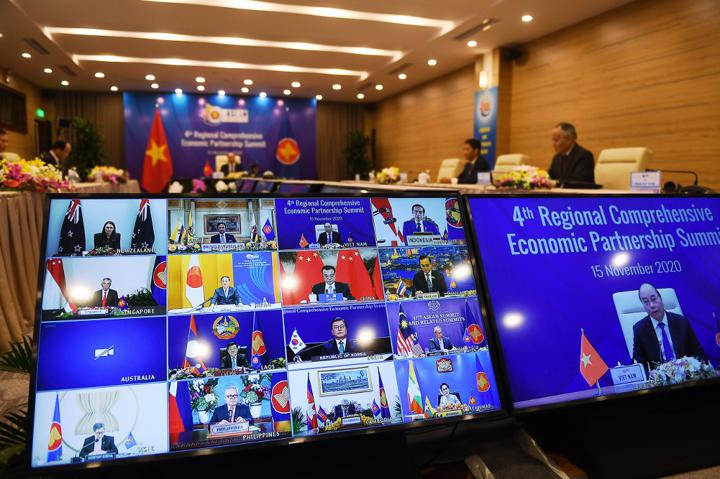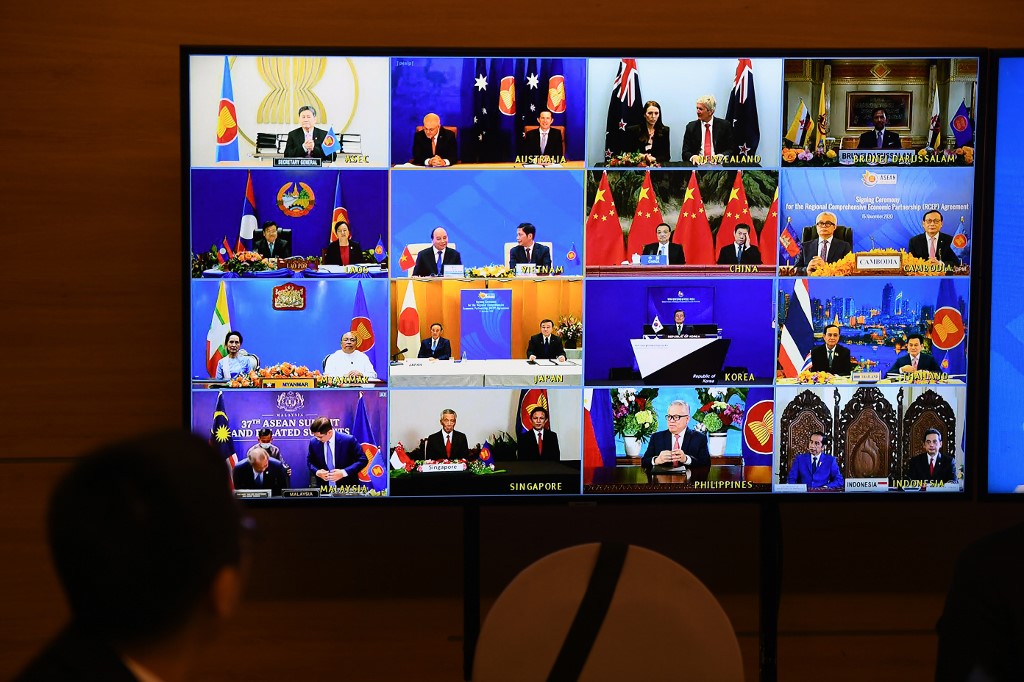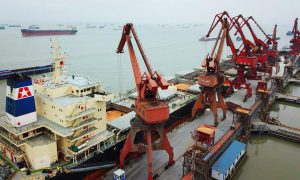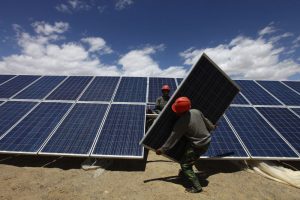(ATF) Some 15 countries in the Asian region signed a major trade deal on Sunday at a ‘virtual summit’ hosted by Vietnam.
The agreement was part of this year’s ASEAN summit for the 10 countries in Southeast Asia and their regional allies, although the meeting of national leaders was held online because of the coronavirus pandemic.
Some analysts have proclaimed the Regional Comprehensive Economic Partnership (RCEP) as a big coup for China in terms of extending its influence. It is the world’s largest trade pact, covering countries with about 2.1 billion people and close to a third of global GDP.
The United States and India were not part of the agreement. US President Donald Trump ditched a move for an alternative trade pact set up by his predecessor Barack Obama, but it is possible President-elect Joe Biden may push for an alternative pact after he takes office in late January.
The online signing ceremony hosted by Vietnam on Sunday is the culmination of eight years of negotiations. The deal was finally sealed at the end of a Southeast Asian summit as leaders push to get their pandemic-hit economies back on track.
“I am happy that after eight years of complex discussions, today we officially end RCEP negotiations,” Vietnamese Prime Minister Nguyen Xuan Phuc said ahead of the virtual signing.
The agreement will lower tariffs and open up the services trade within the bloc. It is seen as a Chinese-led alternative to a now-defunct Washington trade initiative.
“The RCEP is widely seen as a China-backed alternative to the Comprehensive and Progressive Agreement for Trans-Pacific Partnership (CPTPP), which covers 11 countries around the Pacific, but excludes China,” Gareth Leather, a senior economist at Capital Economics, said.
Any new tariff reductions will be gradual
But unlike the CPTPP, which aims to reduce both tariff and non-tariff barriers, “RCEP is primarily about tariffs, which are already very low across most of the region,” Leather said. “Over 70% of trade within ASEAN is conducted with zero tariffs.
“What’s more, the new tariff reductions will only come into force gradually, and it will be years before the treaty is fully operational,” he said.
The key attraction of the RCEP from China’s perspective, Leather said, “is that it doesn’t commit members to a significant opening up of services, liberalisation of government procurement, or rollback of industrial policy.”
Alexander Capri, a trade expert at the National University of Singapore Business School, said RCEP “solidifies China’s broader regional geopolitical ambitions around the Belt and Road initiative”, referring to Beijing’s signature investment project that envisions Chinese infrastructure and influence spanning the globe.
“It’s sort of a complementary element.”
But with many signatories battling severe coronavirus outbreaks, they are also hoping the RCEP will help mitigate the crippling economic cost of the illness.
Indonesia recently tumbled into its first recession for two decades while the Philippine economy shrunk by 11.5% on-year in the latest quarter.
“Covid has reminded the region of why trade matters and governments are more eager than ever to have positive economic growth,” said Deborah Elms, executive director of the Asian Trade Centre, a Singapore-based consultancy.
“RCEP can help deliver it.”

Vietnam’s Prime Minister Nguyen Xuan Phuc, right, hosts the Regional Comprehensive Economic Partnership (RCEP) Summit at the Association of Southeast Asian Nations (ASEAN) summit, held online in Hanoi on Nov 15, 2020. Photo: Nhac Nguyen / AFP.
India absent
India pulled out of the agreement last year over concerns about cheap Chinese goods entering the country and will be a notable absentee during Sunday’s virtual signing.
However, it can join at a later date if it chooses.
Crucially, it should help shrink costs and make life easier for companies by letting them export products anywhere within the bloc without meeting separate requirements for each country.
The agreement touches on intellectual property, but environmental protections and labour rights are not part of the pact.
The deal is also seen as a way for China to draft the rules of trade in the region, after years of US retreat under President Donald Trump which saw his administration pull out of the Trans-Pacific Partnership (TPP).
US multinationals will be able to benefit from RCEP through subsidiaries within member countries.
This could see the US eye the potential benefits of joining the TPP’s successor deal, the CPTPP, Rajiv Biswas, APAC chief economist at IHS Markit, said.
“However, this is not expected to be an immediate priority issue… given the considerable negative response to the TPP negotiations from many segments of the US electorate due to concerns about US job losses to Asian countries,” he added.
But even under Joe Biden, Leather believed there was “little prospect of the US signing trade deals any time soon.”
With reporting by AFP
























